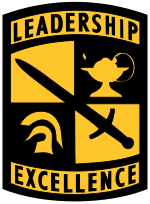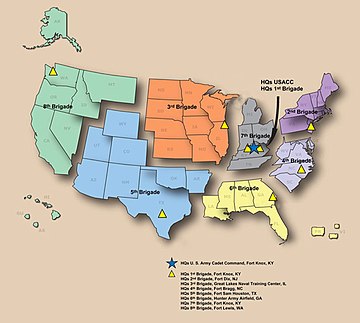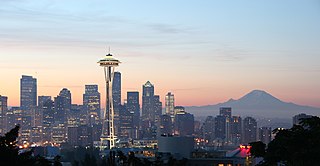
The Pacific Northwest is a geographic region in western North America bounded by its coastal waters of the Pacific Ocean to the west and, loosely, by the Rocky Mountains to the east. Though no official boundary exists, the most common conception includes the U.S. states of Oregon, Washington, and Idaho, and the Canadian province of British Columbia. Some broader conceptions reach north into Alaska and Yukon and south into northern California. Other conceptions may be limited to the coastal areas west of the Cascade and Coast mountains. The variety of definitions can be attributed to partially overlapping commonalities of the region's history, culture, geography, society, and other factors.
A Corps area was a geographically-based organizational structure of the United States Army used to accomplish administrative, training and tactical tasks from 1920 to 1942. Each corps area included divisions of the Regular Army, Organized Reserve and National Guard of the United States. Developed as a result of serious mobilization problems during World War I, this organization provided a framework to rapidly expand the Army in time of war or national emergency such as the Great Depression.
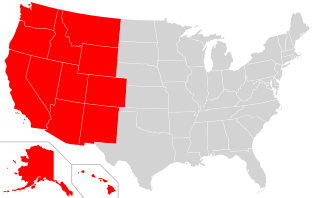
The Western United States is the region comprising the westernmost states of the United States. As American settlement in the U.S. expanded westward, the meaning of the term the West changed. Before about 1800, the crest of the Appalachian Mountains was seen as the western frontier. The frontier moved westward and eventually the lands west of the Mississippi River were considered the West.
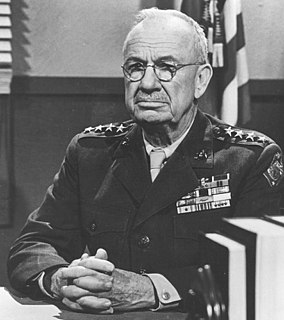
Holland McTyeire "Howlin' Mad" Smith, KCB was a general in the United States Marine Corps during World War II. He is sometimes called the "father" of modern U.S. amphibious warfare. His nickname, "Howlin' Mad" Smith, had been given to him by his troops in the Dominican Republic in 1916.
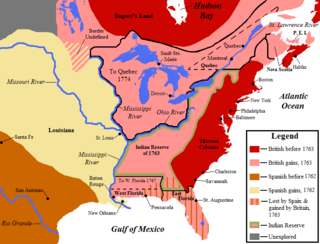
The territory of the United States and its overseas possessions has evolved over time, from the colonial era to the present day. It includes formally organized territories, proposed and failed states, unrecognized breakaway states, international and interstate purchases, cessions, and land grants, and historical military departments and administrative districts. The last section lists informal regions from American vernacular geography known by popular nicknames and linked by geographical, cultural, or economic similarities, some of which are still in use today.

The 104th Infantry Division was an infantry division of the United States Army. Today, it is known as the 104th Training Division and based at Fort Lewis, Washington, as a training unit of the United States Army Reserve.

The 96th Sustainment Brigade, is a combat service support formation of the United States Army Reserve. It traces its history to the 96th Infantry Division which served in the Asia-Pacific theater during World War II. Effective 17 September 2008, the unit became the 96th Sustainment Brigade, with its headquarters located at Fort Douglas, Salt Lake City, Utah.

The 41st Infantry Division was an infantry division of the United States Army National Guard composed primarily of units from the Pacific Northwest. The division saw active service in World War I and World War II., receiving the nickname Jungleers during the latter.

The United States Army Reserve (USAR) is a reserve force of the United States Army. Together, the Army Reserve and the Army National Guard constitute the Army element of the reserve components of the United States Armed Forces.
The Department of the Pacific or Pacific Department was a major command (Department) of the United States Army from 1853 to 1858. It replaced the Pacific Division, and was itself replaced by the Department of California and the Department of Oregon.
The Pacific coast theater of the American Civil War consists of major military operations in the United States on the Pacific Ocean and in the states and Territories west of the Continental Divide. The theater was encompassed by the Department of the Pacific that included the states of California, Oregon, and Nevada, the territories of Washington, Utah, and later Idaho.
Leon Dewey "Lee" Cuddeback flew the first scheduled, civilian Air Mail flight in the United States on April 6, 1926. He did so as chief pilot of Varney Air Lines. His route began in Pasco, Washington, had a stop in Boise, Idaho, and terminated in Elko, Nevada. Because the start of the contract air mail system is considered the beginning of airline service, Cuddeback's flight is cited as the first U.S. airline flight, and is also celebrated as the "birthday" of United Airlines.
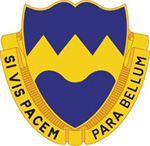
The 414th Regiment is a training regiment of the United States Army Reserve.

Richard Urquhart Goode was an American geographer and topographer with the United States Geological Survey, Northern Transcontinental Railroad Survey, and the Panama Canal Company.

The 116th Cavalry Brigade Combat Team is the largest formation of the Idaho Army National Guard. It is headquartered at Gowen Field, Boise, Idaho. It has been reorganized into an Armored Brigade Combat Team (ABCT) but remains the only unit to be designated a "Cavalry Brigade Combat Team" by special appointment of the US Army. The 116th Cavalry Brigade Combat Team has units located throughout Idaho, Montana, Oregon, and Nevada. It was reorganized into a heavy armor brigade in 1989. Often referred to as the Snake River Brigade and formerly known as the 116th Armored Cavalry Regiment, the unit includes about 3,000 citizen-soldiers from Idaho.

The following works deal with the cultural, political, economic, military, biographical and geologic history of pre-territorial Idaho, Idaho Territory and the State of Idaho.
The following television stations operate on virtual channel 8 in the United States:
The following television stations operate on virtual channel 6 in the United States:

George Lewis Bartlett is a retired decorated officer in the United States Marine Corps with the rank of Brigadier General. A veteran of three wars, he began his career as Enlisted Marine during World War II and served as Navigator-Bombardier in Pacific theater. Bartlett remained in the Marines and rose through the ranks to the capacity of Director, Facilities and Services Division, Installations and Logistics.
